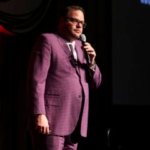One of the tools that we like to use when we look at how to stretch a meeting budget is Convene’s 22nd Annual Meetings Market Survey, published in the March 2013 issue. If a planner is going to make cuts in some expense areas, it’s best to have benchmarking data to ground those decisions. Here’s a summary of the major expense buckets from the survey:
Expense Category |
% of Meeting Expense |
| Food & Beverage | 33% |
| Audiovisual | 15% |
| Decorator/Labor | 9% |
| Staff Travel | 8% |
| Marketing/Promotion | 7% |
| Speakers/Entertainment | 7% |
| Registration/Housing | 6% |
| Space Rental | 6% |
From a process perspective, we map an association’s annual meeting expenses (not including allocated staff, general and administrative, or overhead expenses) against this benchmark of 450-plus meeting professional responses and study the major gaps. Here are some of the takeaways that we’ve come up with after conducting this exercise for numerous events:
1. Meetings that have high spend in F&B tend to deliver more value to the stomach than to the attendee networking and education experience. Often these meetings are under-spending in the line items for professional speakers, AV, and entertainment — and collectively, these make up the primary categories for the attendee value proposition. Meeting professionals with this dilemma literally need to trim the F&B fat and shift those dollars into education and experience elements.
2. Meetings that have low spend in food-and-beverage also tend to have low spend in the other major attendee experience areas. These meetings are usually spending way too much on marketing/promotion. This often points to an attendee-loyalty issue — marketing costs are high because retention is low. Some experts claim it costs six to seven times more to acquire a new customer or attendee than a repeat participant. Many of these meetings used to invest more in the areas attendees value, but have made cutbacks over time. Guess what? Your paying attendees do not value — at all — the expenses you incur in marketing.
EASIER SAID THAN DONE
Attendees will never understand why it costs $140 for a gallon of coffee, $25 per person for a continental breakfast, or $44 a head for a deli buffet. Heck, I’m amazed by what hotels charge for these basics. And don’t get me started about AV costs and Wi-Fi.
Expenses are out of control. But before you take a scalpel to those elements that enrich the attendee experience, you first must rein in the expense buckets that don’t add to the attendee value proposition. After that, evaluate if you might get more bang for your buck by increasing your investment in other education or experience elements.
THE 55-PERCENT RULE
It’s critical when benchmarking that you don’t try to conform to survey averages, but rather use that data as a tool to help support decision-making. Keep in mind that your budgetary decisions should revolve around investing in the attendee experience. When you add together the F&B, AV, and speaker/entertainment buckets, you get a total of 55 percent of the overall meeting spend.
Start there. Make a commitment that at least 55 percent of your expenses will fall under those line items, because they have a direct impact on your participants’ experience at your event. Although the other buckets are real to your organization, they don’t matter to attendees.



